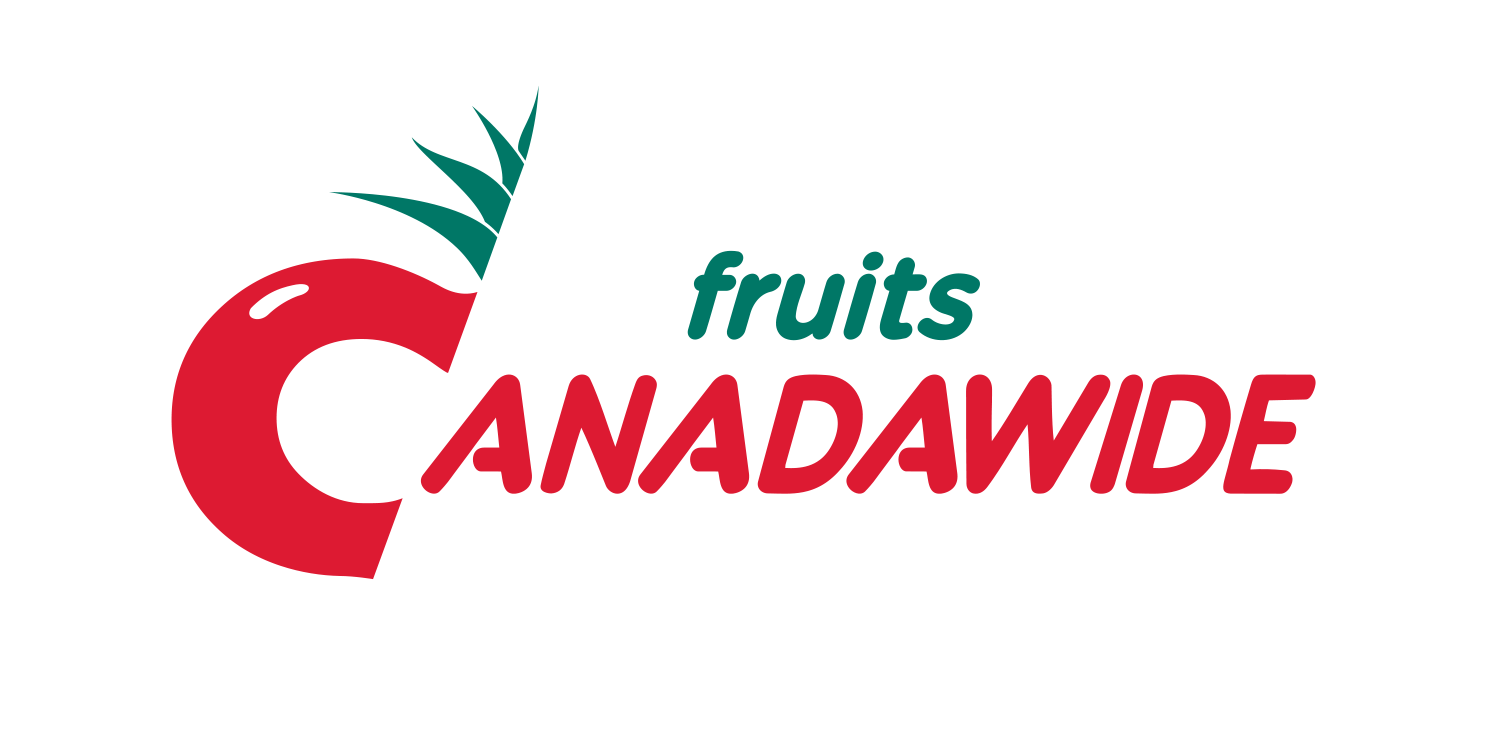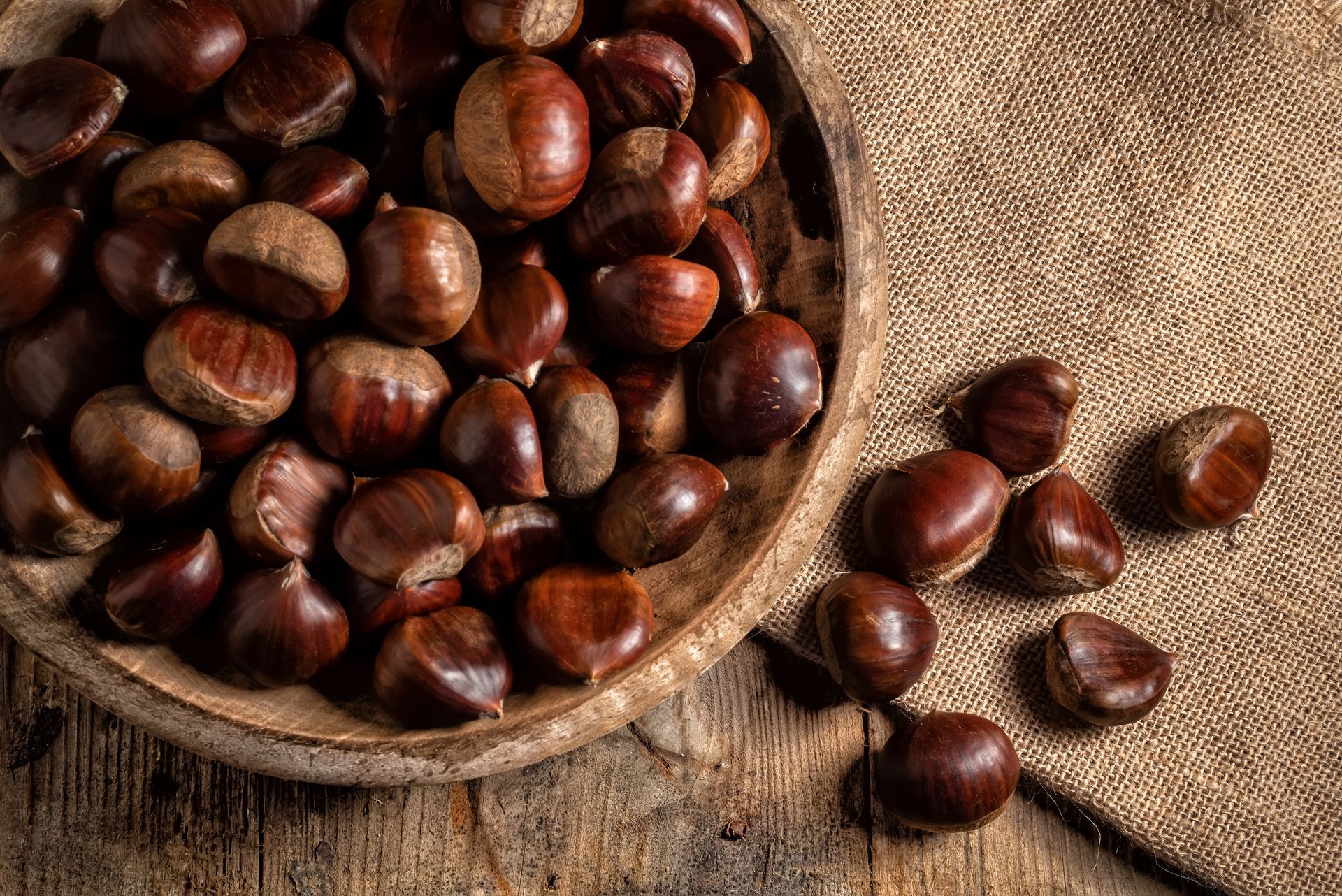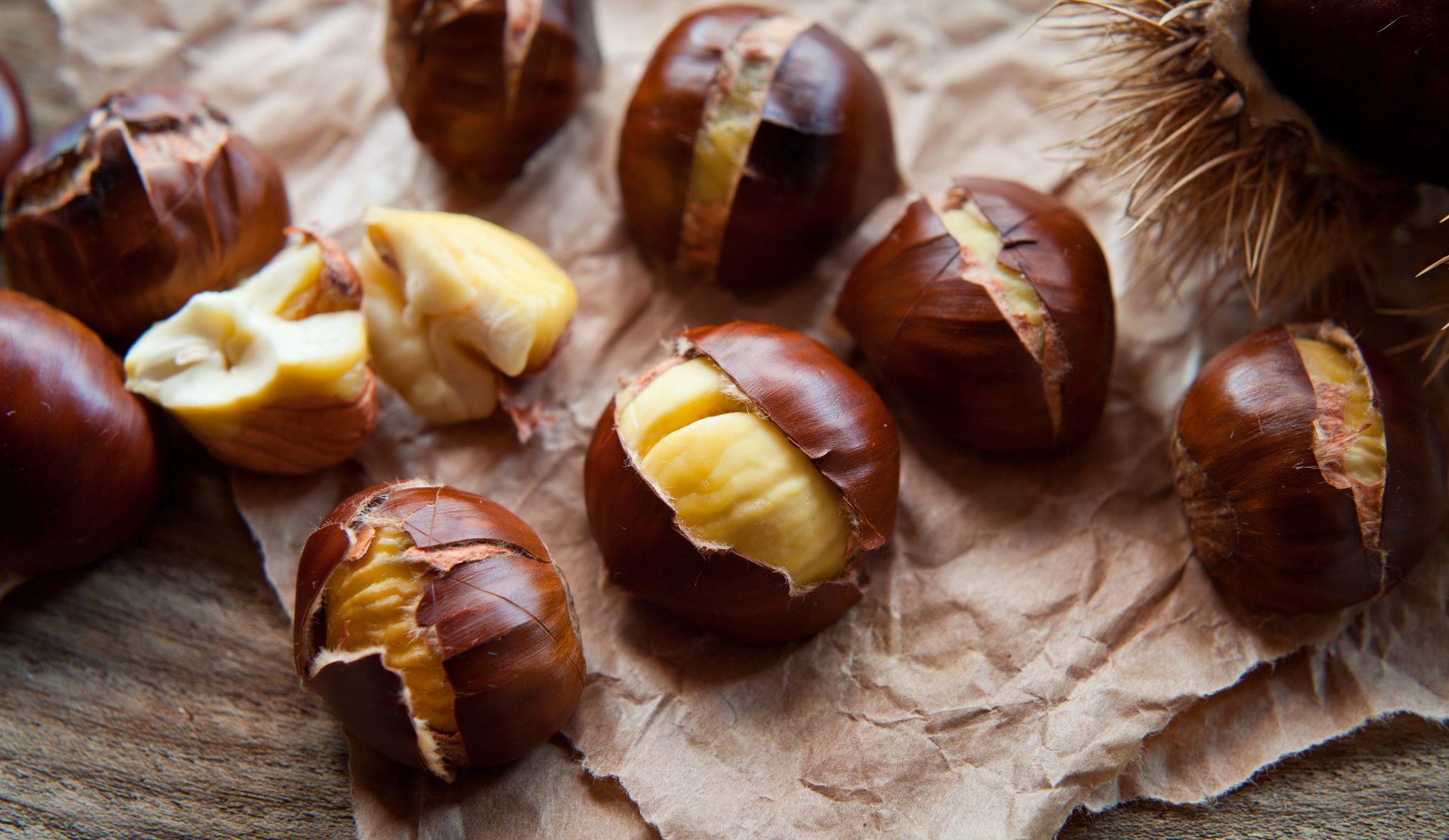chesnut
The chesnut, the fruit of the chestnut tree, is a fleshy seed enclosed in a spiky burr that opens at maturity to reveal one to three large, shiny brown nuts. Native to the temperate regions of Europe and Asia, it is harvested in the fall and highly valued for its nutritional richness and mild flavor. Beneath its glossy brown shell lies a beige, firm, and starchy flesh that becomes tender and slightly sweet when cooked. Its delicate taste is reminiscent of a blend of hazelnut and sweet potato, with a subtle earthy note. Roasted, boiled, or mashed, chestnuts are a popular ingredient in winter dishes, stuffings, and traditional desserts.
purchase GUIDE
Choose chestnuts that are hard, heavy for their size and shiny. If you shake the chestnut and hear movement inside, it is no longer good to eat.
OPTIMAL TEMPERATURE FOR CONSERVATION
0 - 2 °C for 7 - 10 days
Chestnuts can be kept for 7 to 10 days in the refrigerator.
NUTRITIonal value
Chestnuts are higher in calories than most fruits but are an excellent source of energy. They contain complex carbohydrates, fiber, and vitamins B1, B6, and C. They also provide potassium, magnesium, and a small amount of iron. Their richness in antioxidants and essential minerals supports vitality, proper nervous system function, and cardiovascular health.
how to eat it
Chestnuts can be eaten raw but are usually cooked. They can be boiled, steamed or roasted over a fire or in the oven after making a cut in the bark.






